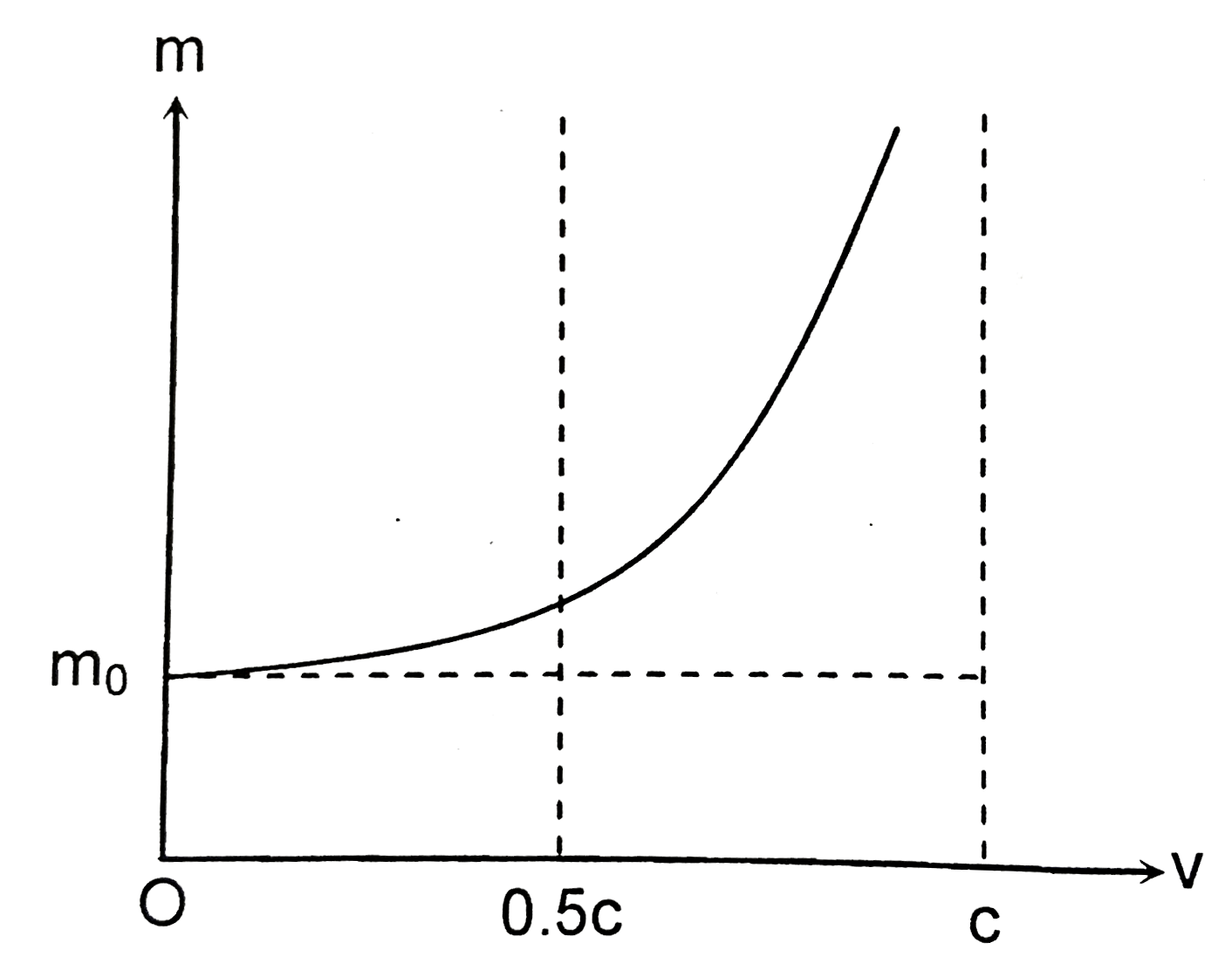According to Einstein’s theory of relativity, the mass m of a body moving with velocity v is m=m0√1−v2c2, where m0 is the initial mass and c is the speed of light. What happens to m as v→c−. Why is a left hand limit necessary?
The correct Answer is:1−v2c2<0
Topper's Solved these Questions
- BOOK - NCERT TAMILCHAPTER - DIFFERENTIAL CALCULUS - LIMITS AND CONTINUITYEXERCISE - Illustration3videos
DIFFERENTIAL CALCULUS - LIMITS AND CONTINUITY
- BOOK - NCERT TAMILCHAPTER - DIFFERENTIAL CALCULUS - LIMITS AND CONTINUITYEXERCISE - EXERCISE 9.120videos
DIFFERENTIAL CALCULUS - LIMITS AND CONTINUITY
- BOOK - NCERT TAMILCHAPTER - CONIC SECTIONSEXERCISE - Miscellaneous Exercise8videos
CONIC SECTIONS
- BOOK - NCERT TAMILCHAPTER - DIFFERENTIAL CALCULUS-DIFFERENTIABILITY AND METHODS OF DIFFERENTIATION EXERCISE - EXERCISE 10.525videos
DIFFERENTIAL CALCULUS-DIFFERENTIABILITY AND METHODS OF DIFFERENTIATION
Similar Questions
The mass m of a body moving with a velocity v is given by m=m0√1−v2c2 where m0 = rest mass of body =10kg and c = speed of light =3×108m/s. Find the value of m at v=3×107m/s
View SolutionThe mass m of a body moving with a velocity v is given by m=m0√1−v2c2 where m0 = rest mass of body =10kg and c = speed of light =3×108m/s. Find the value of m at v=3×107m/s
View Solution
Knowledge Check
- Question 1 - Select One
According to Einsteins theory of relativity, mass of an object moving with velocity v is
Am=m0√1−v2c2Bm=m0(1−v2c2)12Cm=m0(1−v2c2)−12Dall of these - Question 2 - Select One
m=M√1−v2c2
The equation above describes, according to Einstein's theory of relativity, how the mass of an object increase with velocity where m is the mass of moving object, M is the mass the mass the object when it is not moving, v is the velocity of the object relative to a stationary observer, and c is the speed of light. Which of the following expresses v in terms of m, M, and c?Ac√1−(Mm)2Bc√1+(Mm)2C√c2+(Mm)2D√c2+(Mm)2−1 - Question 3 - Select One
A body of mass m moving with a velocity v strikes a statioinalry body of mass m and sticks to it. What is the speed of the system?
A2vBvCv2Dv3
A particle of mass 2m moving with velocity v strikes a stationary particle of mass 3m and sticks to it . The speed of the system will be
View SolutionA particle of mass 2m moving with velocity v strikes a stationary particle of mass 3m and sticks to it. The speed of the system will be
View SolutionA particle of mass 2m moving with velocity v strikes a stationary particle of mass 3m and sticks to it . The speed of the system will be
View SolutionA particle of mass m moving with velocity v strikes a stationary particle of mass 2m and sticks to it. The speed of the system will be.
View SolutionMass m=m0√1−v2c2 as a function of a velocity is shown in the graph. m0 is the rest mass of the system. The kinetic energy of system is given as K=mc2−mcC2
Choose correct option (s)
 View Solution
View Solution

